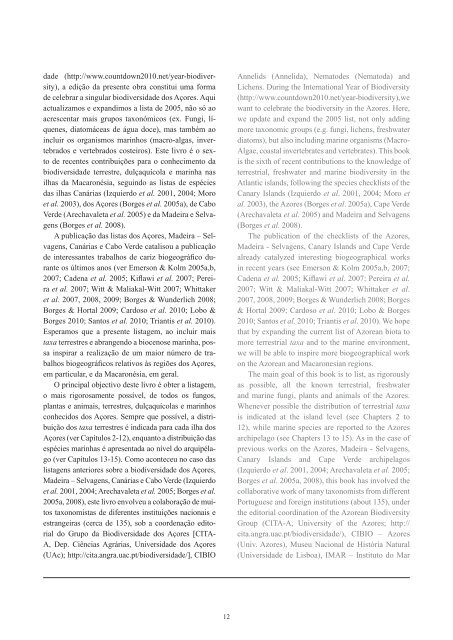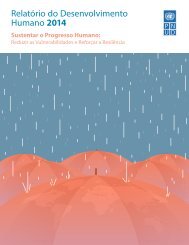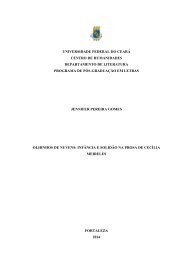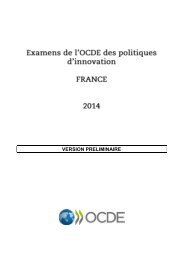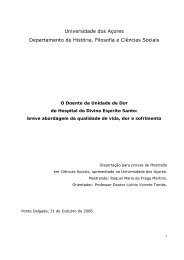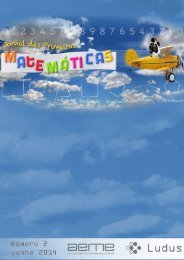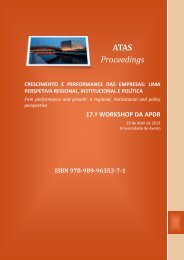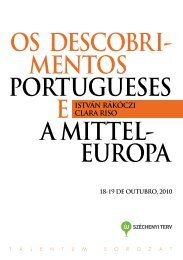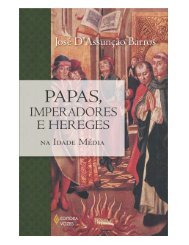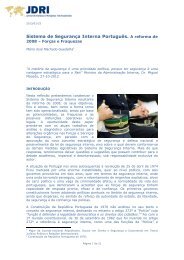1POTXAdSn
1POTXAdSn
1POTXAdSn
Create successful ePaper yourself
Turn your PDF publications into a flip-book with our unique Google optimized e-Paper software.
dade (http://www.countdown2010.net/year-biodiversity),<br />
a edição da presente obra constitui uma forma<br />
de celebrar a singular biodiversidade dos Açores. Aqui<br />
actualizamos e expandimos a lista de 2005, não só ao<br />
acrescentar mais grupos taxonómicos (ex. Fungi, líquenes,<br />
diatomáceas de água doce), mas também ao<br />
incluir os organismos marinhos (macro-algas, invertebrados<br />
e vertebrados costeiros). Este livro é o sexto<br />
de recentes contribuições para o conhecimento da<br />
biodiversidade terrestre, dulçaquícola e marinha nas<br />
ilhas da Macaronésia, seguindo as listas de espécies<br />
das ilhas Canárias (Izquierdo et al. 2001, 2004; Moro<br />
et al. 2003), dos Açores (Borges et al. 2005a), de Cabo<br />
Verde (Arechavaleta et al. 2005) e da Madeira e Selvagens<br />
(Borges et al. 2008).<br />
A publicação das listas dos Açores, Madeira – Selvagens,<br />
Canárias e Cabo Verde catalisou a publicação<br />
de interessantes trabalhos de cariz biogeográfico durante<br />
os últimos anos (ver Emerson & Kolm 2005a,b,<br />
2007; Cadena et al. 2005; Kiflawi et al. 2007; Pereira<br />
et al. 2007; Witt & Maliakal-Witt 2007; Whittaker<br />
et al. 2007, 2008, 2009; Borges & Wunderlich 2008;<br />
Borges & Hortal 2009; Cardoso et al. 2010; Lobo &<br />
Borges 2010; Santos et al. 2010; Triantis et al. 2010).<br />
Esperamos que a presente listagem, ao incluir mais<br />
taxa terrestres e abrangendo a biocenose marinha, possa<br />
inspirar a realização de um maior número de trabalhos<br />
biogeográficos relativos às regiões dos Açores,<br />
em particular, e da Macaronésia, em geral.<br />
O principal objectivo deste livro é obter a listagem,<br />
o mais rigorosamente possível, de todos os fungos,<br />
plantas e animais, terrestres, dulçaquícolas e marinhos<br />
conhecidos dos Açores. Sempre que possível, a distribuição<br />
dos taxa terrestres é indicada para cada ilha dos<br />
Açores (ver Capítulos 2-12), enquanto a distribuição das<br />
espécies marinhas é apresentada ao nível do arquipélago<br />
(ver Capítulos 13-15). Como aconteceu no caso das<br />
listagens anteriores sobre a biodiversidade dos Açores,<br />
Madeira – Selvagens, Canárias e Cabo Verde (Izquierdo<br />
et al. 2001, 2004; Arechavaleta et al. 2005; Borges et al.<br />
2005a, 2008), este livro envolveu a colaboração de muitos<br />
taxonomistas de diferentes instituições nacionais e<br />
estrangeiras (cerca de 135), sob a coordenação editorial<br />
do Grupo da Biodiversidade dos Açores [CITA-<br />
A, Dep. Ciências Agrárias, Universidade dos Açores<br />
(UAc); http://cita.angra.uac.pt/biodiversidade/], CIBIO<br />
12<br />
Annelids (Annelida), Nematodes (Nematoda) and<br />
Lichens. During the International Year of Biodiversity<br />
(http://www.countdown2010.net/year-biodiversity), we<br />
want to celebrate the biodiversity in the Azores. Here,<br />
we update and expand the 2005 list, not only adding<br />
more taxonomic groups (e.g. fungi, lichens, freshwater<br />
diatoms), but also including marine organisms (Macro-<br />
Algae, coastal invertebrates and vertebrates). This book<br />
is the sixth of recent contributions to the knowledge of<br />
terrestrial, freshwater and marine biodiversity in the<br />
Atlantic islands, following the species checklists of the<br />
Canary Islands (Izquierdo et al. 2001, 2004; Moro et<br />
al. 2003), the Azores (Borges et al. 2005a), Cape Verde<br />
(Arechavaleta et al. 2005) and Madeira and Selvagens<br />
(Borges et al. 2008).<br />
The publication of the checklists of the Azores,<br />
Madeira - Selvagens, Canary Islands and Cape Verde<br />
already catalyzed interesting biogeographical works<br />
in recent years (see Emerson & Kolm 2005a,b, 2007;<br />
Cadena et al. 2005; Kiflawi et al. 2007; Pereira et al.<br />
2007; Witt & Maliakal-Witt 2007; Whittaker et al.<br />
2007, 2008, 2009; Borges & Wunderlich 2008; Borges<br />
& Hortal 2009; Cardoso et al. 2010; Lobo & Borges<br />
2010; Santos et al. 2010; Triantis et al. 2010). We hope<br />
that by expanding the current list of Azorean biota to<br />
more terrestrial taxa and to the marine environment,<br />
we will be able to inspire more biogeographical work<br />
on the Azorean and Macaronesian regions.<br />
The main goal of this book is to list, as rigorously<br />
as possible, all the known terrestrial, freshwater<br />
and marine fungi, plants and animals of the Azores.<br />
Whenever possible the distribution of terrestrial taxa<br />
is indicated at the island level (see Chapters 2 to<br />
12), while marine species are reported to the Azores<br />
archipelago (see Chapters 13 to 15). As in the case of<br />
previous works on the Azores, Madeira - Selvagens,<br />
Canary Islands and Cape Verde archipelagos<br />
(Izquierdo et al. 2001, 2004; Arechavaleta et al. 2005;<br />
Borges et al. 2005a, 2008), this book has involved the<br />
collaborative work of many taxonomists from different<br />
Portuguese and foreign institutions (about 135), under<br />
the editorial coordination of the Azorean Biodiversity<br />
Group (CITA-A, University of the Azores; http://<br />
cita.angra.uac.pt/biodiversidade/), CIBIO – Azores<br />
(Univ. Azores), Museu Nacional de História Natural<br />
(Universidade de Lisboa), IMAR – Instituto do Mar


